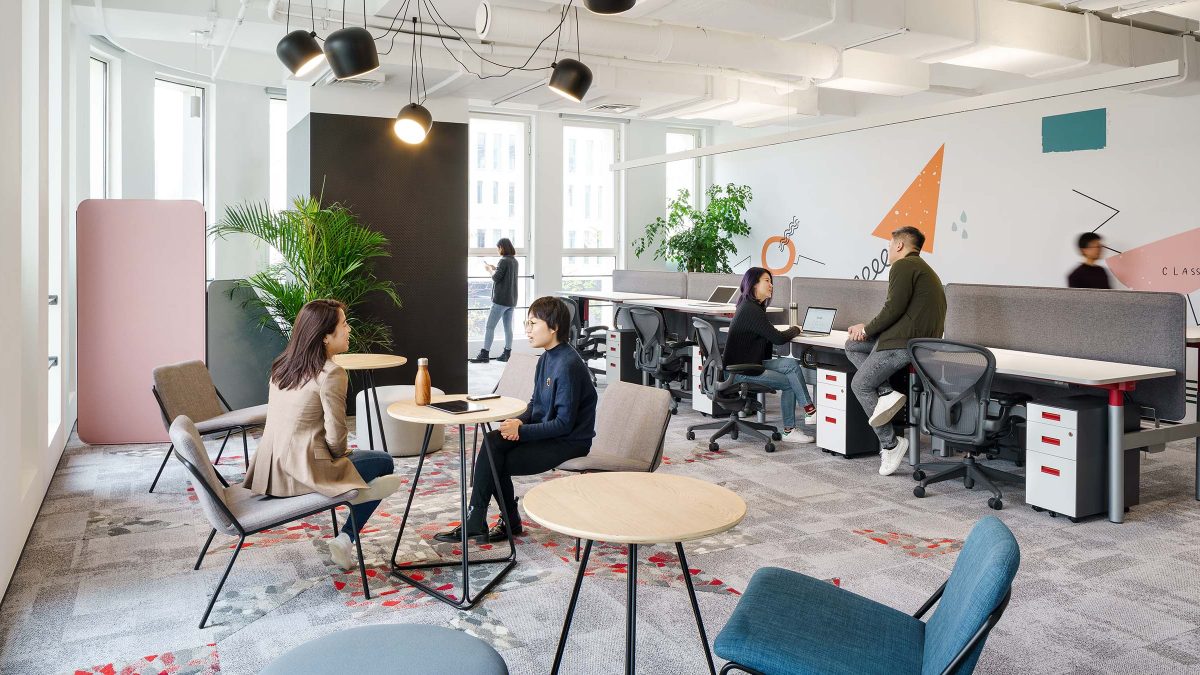









 Illustration by Pavle Ciric @pajac_
Illustration by Pavle Ciric @pajac_
In this series we discuss Toronto workplace design strategies that help leaders gain a competitive edge during the transformation of their businesses.
Changes are happening to the ways people live and work. Businesses are going through a global revolution. Industries are moving faster than ever so employee demands of their workplaces are changing. Employers are now facing greater risks.
A focus on human-centric Toronto workplace design is helping leaders gain a competitive edge during their business transformation.
Research by McKinsey highlights significant challenges for transforming companies. An organisation’s leadership are 50% more likely to report successful transformation than their employees. There is a high risk of failure when change happens without engagement across all levels.
Success will happen when new approaches to designing how people work have a thorough change management programme.
In the same study, McKinsey also noted that the several initiatives was an important success factor, “the more actions an organisation takes, the more likely its transformation is to succeed.”
A Toronto workplace design that supports people, their teams and business will boost the chances of successful and sustained transformation.
Group Director at M Moser, Nabil Sabet, in an interview with HR Technologist, noted, “The most impactful efforts we see are when all facets come together to develop transformation strategies: the head of business (CEO), head of people (COO or HR), head of finance (CFO) and business stakeholders.”
People are key. To achieve holistic change that has support from everyone in the business the workplace design solution will have to refine the “operating system” of the office that governs how people work. Once employees and their working behaviours align with the vision for the future, people using the environment can deliver greater value to their organisations over time.

When employees become the champions of transformation, we see deeper and more sustainable change happen. When employee wellbeing is a priority it becomes easier to attract, retain and nurture high performers. Businesses are changing more rapidly than ever and as a result, people want to be more engaged with an organisation’s mission. In this article, we discuss how this helps to boost motivation and provide long term structure.
With a clear purpose, staff are able to understand and connect more deeply with customer needs. When the work environment is designed to enable many different skillsets to collaborate effectively with the same goal in mind, businesses can produce faster and more disruptive innovations. Discover the future workplace environments dedicated to experimenting with new ideas that support new kinds of team-based work.
Stakeholders are seeking new kinds of operational agility and workplaces are becoming more flexible and adaptable as a result. Give staff greater control over their office environments to support their changing needs. Think of your office as a space that’s never quite finished, so it’s ready to be hacked, adjusted and updated as things move forwards. In this article we discuss the design and construction techniques that support constant change.
Group Director
Regional Director
Associate Director, Design
Associate Director, Workplace Strategy and Transformation